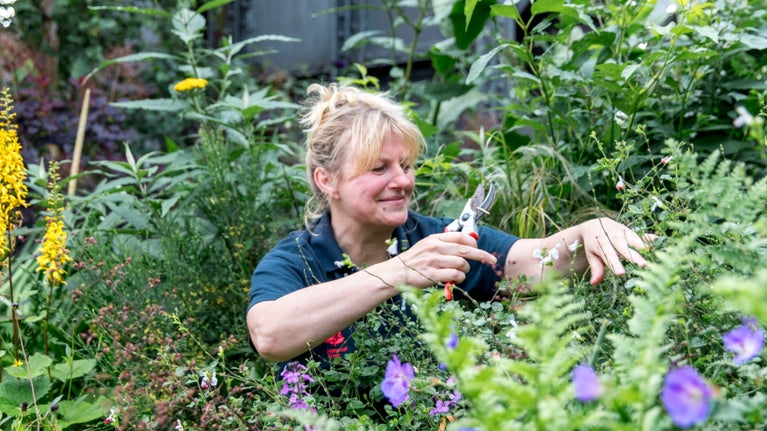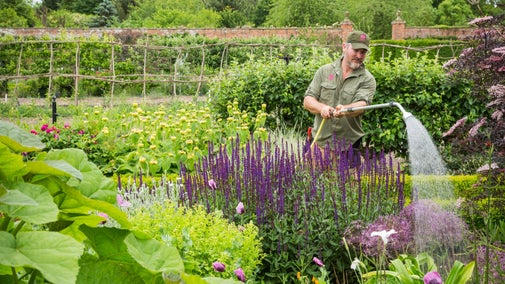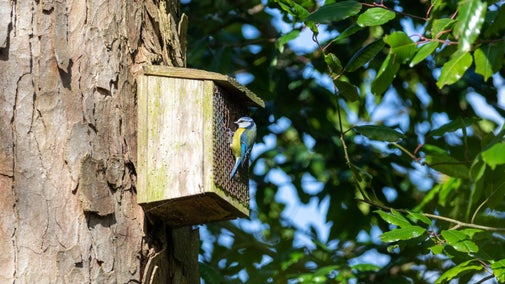
Get gardening
Our gardeners are on hand with ideas for your garden, plot or window box. From planting veg to tackling weeds, they’ve got all the important topics covered.


With colourful blooms to enjoy, fruit to pick and wildlife to watch, the summer months are rewarding for many gardeners and growers. Discover how to make the most of the summer season with some top tips from our gardeners.
At this time of year, it's a good idea to trim your perennials so that they flower for longer and keep their strength and vigour.
Many gardeners like to do the ‘Hampton Court’ hack in July. This method involves taking the shoot of a plant in your flower border and cutting back by roughly a third.
It's important to deadhead flowering plants to keep them healthy and blooming for as long as possible, unless they have attractive seedheads or berries. Always consider letting some flowers go to seed for interest and wildlife.
You may not need to water as much as you think, especially if the soil is healthy and the ground is covered by plants or mulches.
Give your plants a drink if they are starting to wilt but don't just water the surface of the soil as this will cause shallow rooting.
It's best to water your garden first thing in the morning or in the evening.

Our gardeners warn against a lot of digging in dry weather as it damages the soil structure, increases moisture loss and disturbs plant roots.
We're working with Blue Diamond garden centres to create a range of plants, seeds and bulbs inspired by the gardens we care for. Jim Teague, Head of Blue Diamond Bridgemere Nursery, recommends letting your grass grow during the summer months to help wildlife:
'You may not realise that some of the most common, unassuming garden features can house thriving worlds of wildlife. Our lawns for example, especially areas of uncut long grass along the edge of a border or a grass verge, are an important habitat for all sorts of insects and birds. Don't be too quick to cut your lawns.'
Late summer is a good time to plant autumn bulbs, including cyclamens, colchicums and dahlias.
Early summer or midsummer are good times of year to propagate plants grown from softwood cuttings. For those that need semi-ripe cuttings, wait until late summer or early autumn. It's said that the best way to conserve a plant is to give it away. Sharing cuttings is a great way to say thank you and make new friends.

Our gardeners are on hand with ideas for your garden, plot or window box. From planting veg to tackling weeds, they’ve got all the important topics covered.
Keep your garden or outdoor space looking its best through the warmest and driest season of the year with these summer gardening tips.

Looking for new ways to help your local wildlife? Here are some of our top tips on how to make your garden a haven for animals, birds and insects.

Learn how to make your own rose arch from former Mottisfont head gardener Jonny Bass, plus an alternative for smaller gardens.

We care for hundreds of historic gardens, encompassing more than 500 years of history and a range of garden styles and fashions. Learn about the most famous and significant gardens you can visit.
